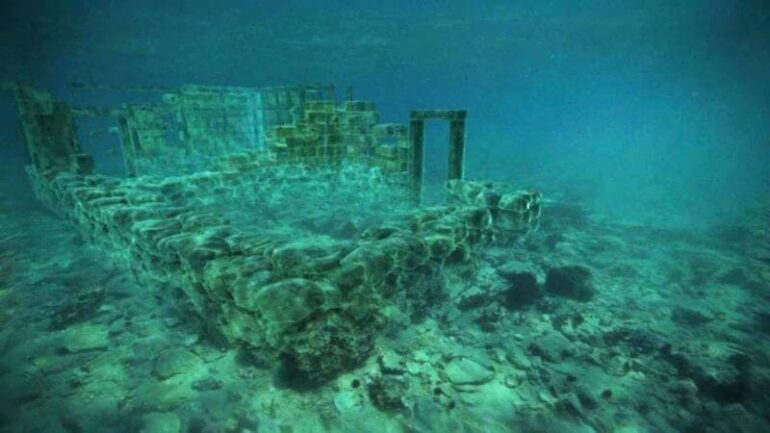Marine archaeologists uncover an advanced ancient metropolis submerged for millennia—could this rewrite human history?
Amazing Find in the Gulf of Khambhat
An ocean team from India’s National Institute of Ocean Technology (NIOT) seems to have found a huge sunken city near Gujarat, India. High-tech sonar pictures and underwater machines helped them spot big shapes, pots, human bones, and tools at least 12,000 years old—a find that could upend our view of when humans first got civilized. They found this while doing their regular check for dirtiness in the water; the sonar showed shapes of a square settlement almost 40 meters below the sea. More digging gave:

- Stone structures resembling temples and houses.
- Pottery fragments with intricate carvings.
- Human skeletal remains suggesting a large, organized population.
- Wooden artifacts preserved in the silt.
Could This Be the Lost City of Dwarka?
As per excerpts from mythological texts of ancient Hindus, the famous city of Dwarka, the abode of Lord Krishna, was an opulent metropolis which after the demise of Krishna became submerged. Some scholars say this could be the fabled Dwarka while others contend that it may be related to some still older unknown civilization.
Dr. Rajiv Nigam, lead marine archaeologist:
Carbon dating of all wooden artifacts found in the place ranks this city around 10,000 BCE, at a time when history as we know it has it that people were still primitive hunter-gatherers. If proved right, this would mean that a high-tech society existed a long time before even Mesopotamia or the Indus Valley.
Why Is This Discovery So Important?
Proof of High-Level Engineering
- Giant stone walls (at least 5 meters tall) hint at advanced building techniques.
- A system-like layout of streets shows urban planning.
- Underwater reservoirs hint at early water management systems.
Artifacts Suggest a Thriving Culture
- Beautifully carved seals like the Indus Valley Civilization, but much older.
- Beads made from semi-precious stones—which imply trade networks.
- Fossilized grains—agriculture.
Geological Evidence of a Disastrous Flood

- Regarding sediment, it is believed that the city was suddenly submerged. Possible reasons:
- Meltwater floods from glaciers at the close of the last Ice Age (about 9,000 BCE).
- A huge tsunami caused by an earthquake underwater.
Challenges & Doubts
- Could these structures be natural? (Sonar data is currently under geological review.)
- Is the dating correct? (Additional samples are undergoing testing.)
- Where are the written records? (If this culture is pre-literate, perhaps its language will never be identified.)
Dr. Ashton Brooks, Cambridge University:
“Extraordinary claims require extraordinary evidence. More excavations needed before the history books are rewritten.”
- International teams (Japan, U.S., Europe) will join the research.
- Advanced 3D mapping will be able to make a digital reconstruction of the city.
- DNA testing might reveal origins.
| Aspect | Sundaland Homo Erectus Discovery | Gulf of Khambhat Sunken City |
|---|---|---|
| Age | 140,000 years (Pleistocene) | 12,000 years (Neolithic) |
| Location | Madura Strait, Indonesia | Gulf of Khambhat, India |
| Key Find | Homo erectus fossils, extinct animals | Urban ruins, human artifacts |
| Implications | Early human migration | Advanced pre-historic civilizations |
| Scientific Method | Fossil dating, sediment analysis | Sonar mapping, carbon dating |


